
This project in the Netherlands has been designed by Ooze Architects and has been extended numerous times in recent decades. Ooze architects translated the owners’ desire to recycle the ‘soul’ of the house by transforming it into a unique design. The architects began with a commission to design a kitchen that then evolved into a complete renovation of the 4,467 square feet (415 square meters) residence.
“The house on which Ooze began to work had gradually grown over the years. It now consisted of two perpendicular building volumes with a pitched roof, a lower semicircle building in between connecting the two parts, and several extensions on the other side in the angle of the hook-shaped house. The owners wanted to reform these incoherent parts into a logical and comprehensive whole. The pre-defined maximum envelope formed the guideline for a new skin that wraps around the old house and shapes new spaces for inhabitation.
The new kitchen and a brief to increase the number of bedrooms were the launch for the redesign of the entire house of which the staircases form the backbone. The layout has been totally reorganized around a central void. A new staircase on the north wall is servicing first and second floor.” Via
“Inside, the building manifests itself through prefabricated, solid wood triangles that have a direct reference to the old roof. This internal structure communicates a sense of the new and the old: living in a new structure as well as with the old walls. The transition between the two is subtle and gradual – as you go up in the house, the new gradually supersedes the old. The material also allowed the outer walls and roof to remain relatively thin. Within the given building envelope a maximum interior space could be realized. Through the creation of a void, the architects transformed the dark and cramped existing stairwell into a bright and social space.”
To speed up the construction process, the architects used prefabricated solid timber panels.
The exterior references traditional Dutch farms through the use of green roofs and is clad in wooden panels made from fast-growing softwood that’s treated in a high-tech process to make it more durable than tropical hardwoods. The lines of the cladding wrap around the house like a continuous new skin. Beyond style or architectural aesthetic, the aim was to engage in a process of rediscovery of the vernacular, to introduce a dialogue between the old and preserved and the new, and to explore a new language which reinterprets the old.
Before the extended addition to Villa Rotterdam.
Photos: Jeroen Musch & Ooze.

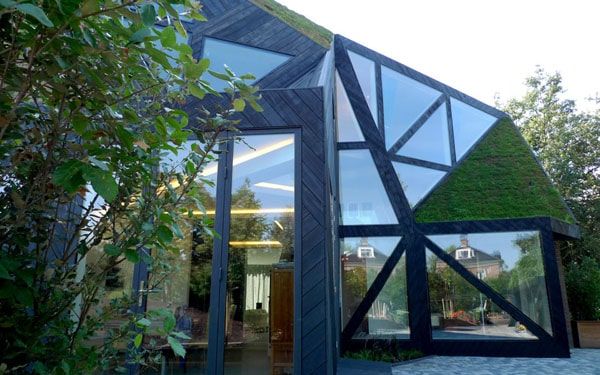
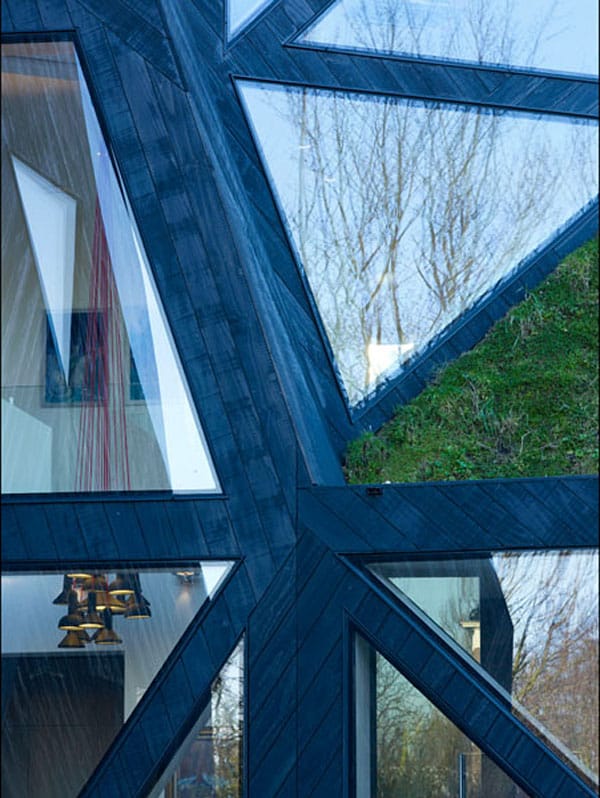

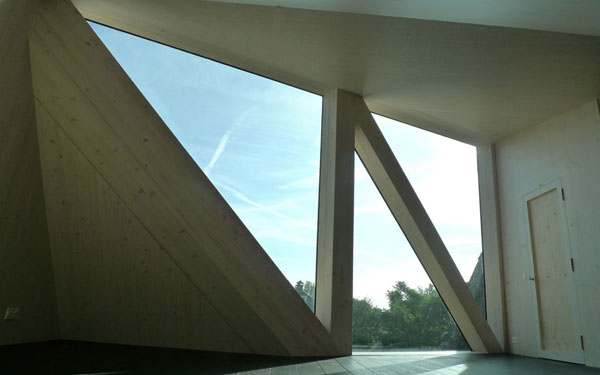
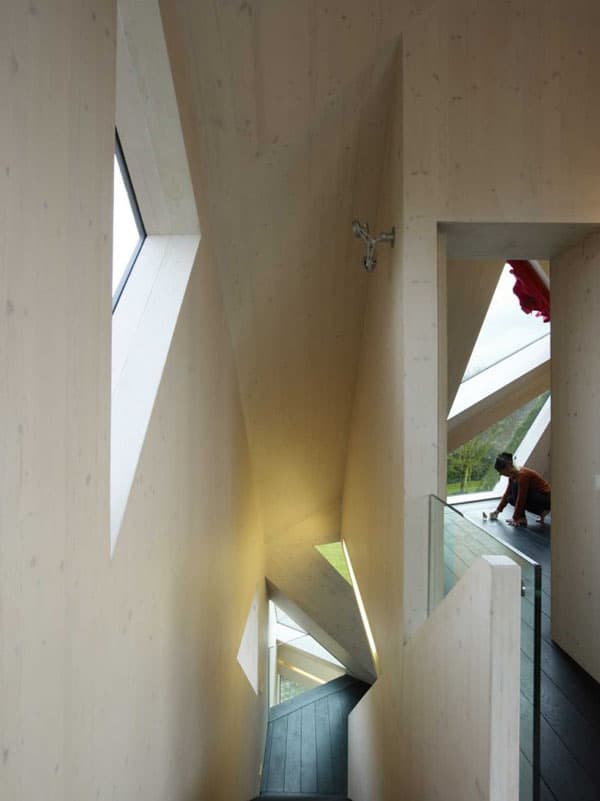
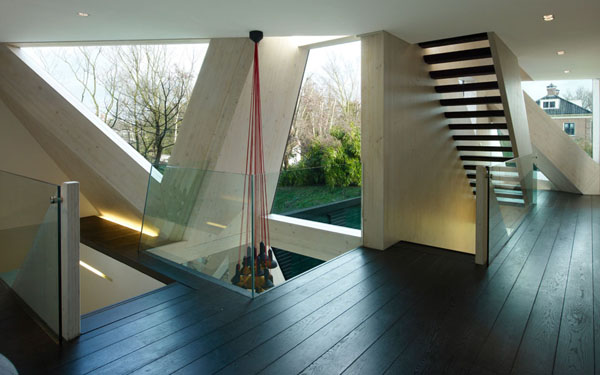
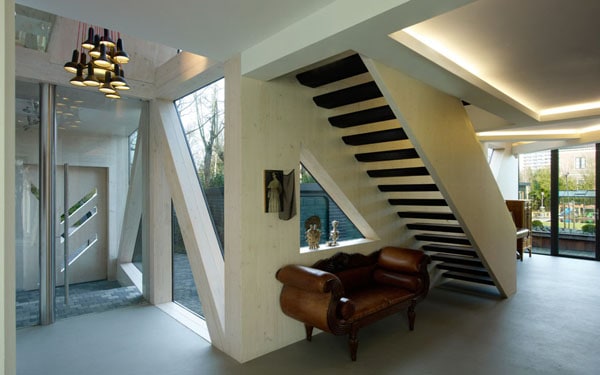
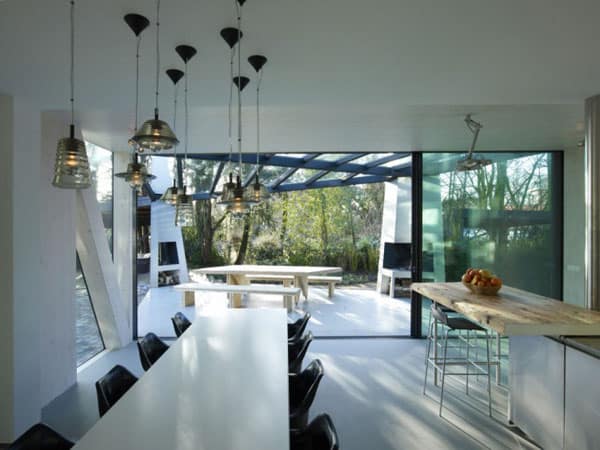
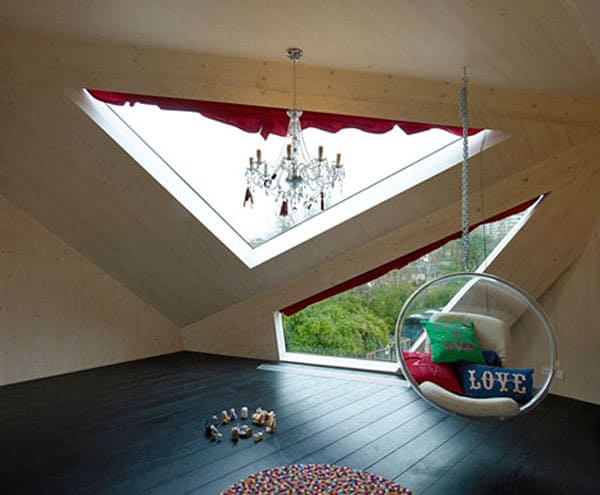
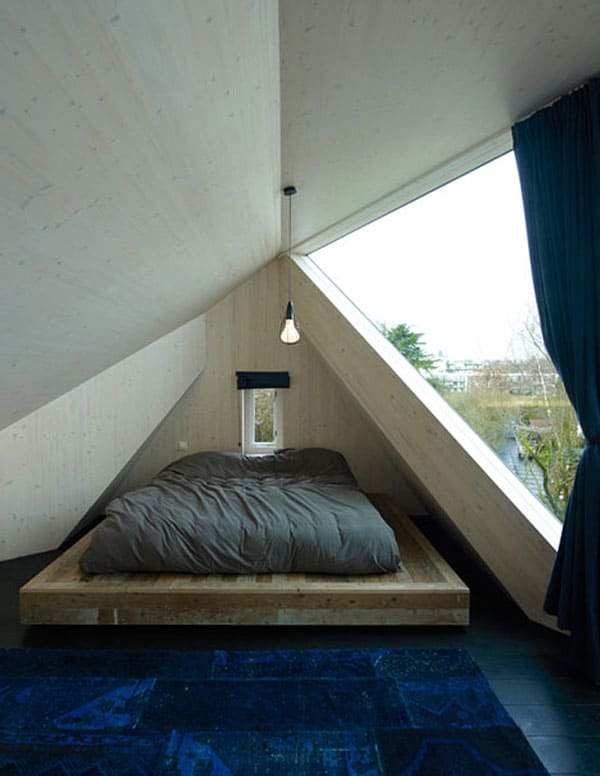
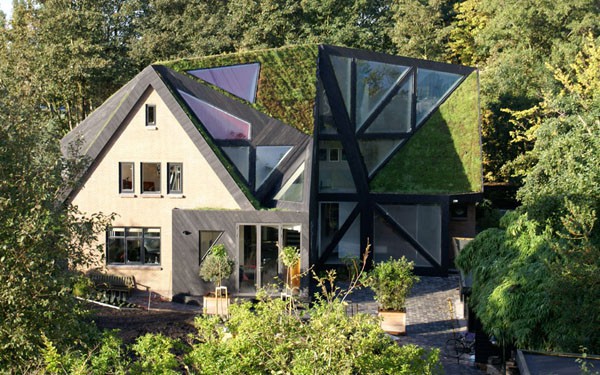
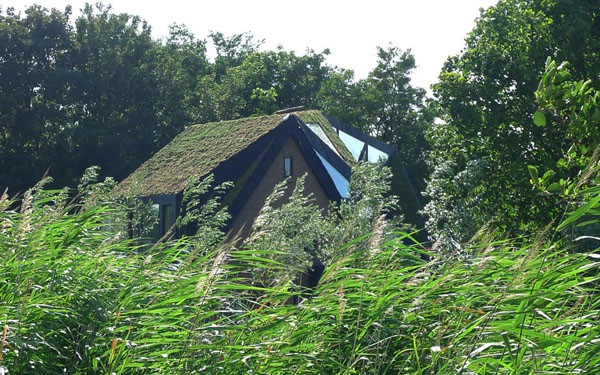
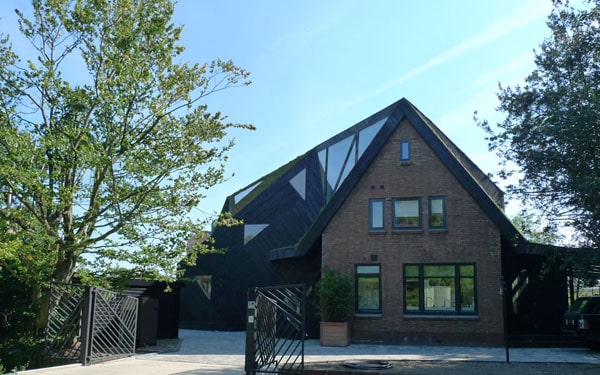
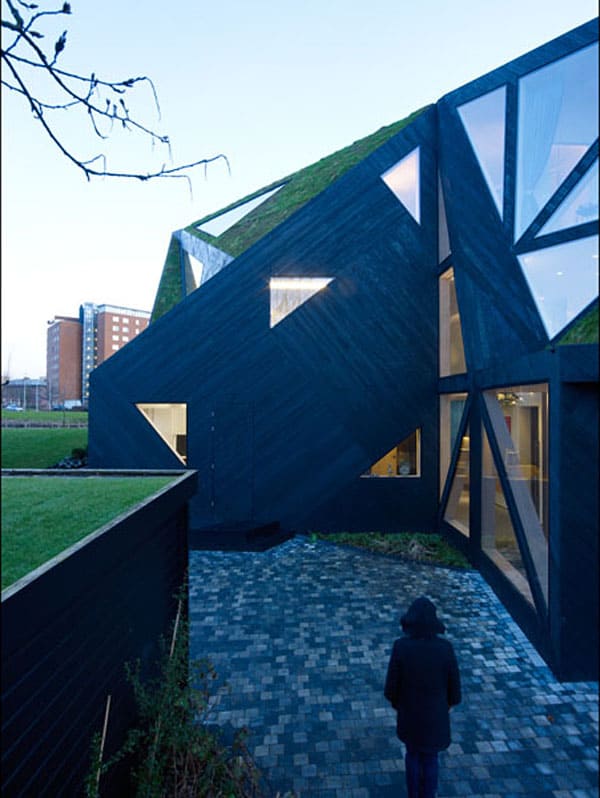

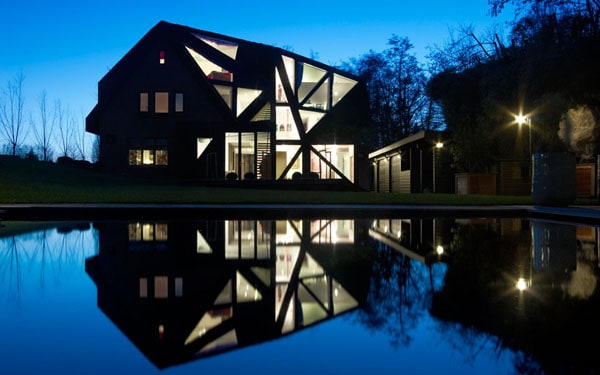

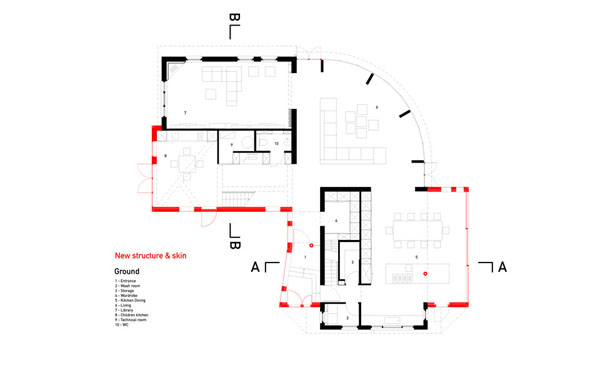
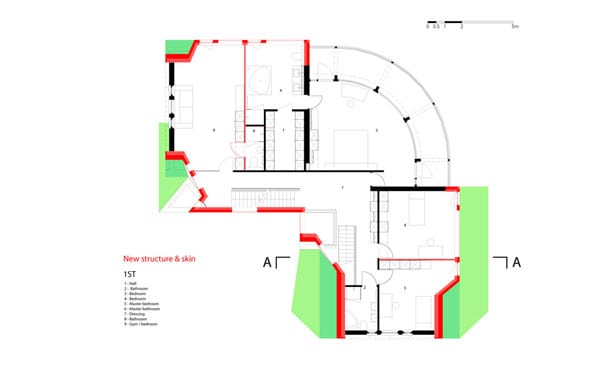
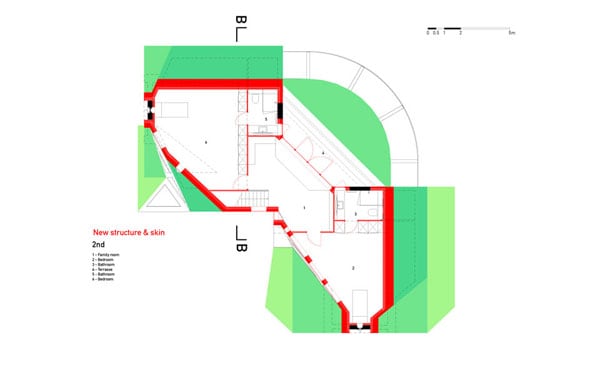
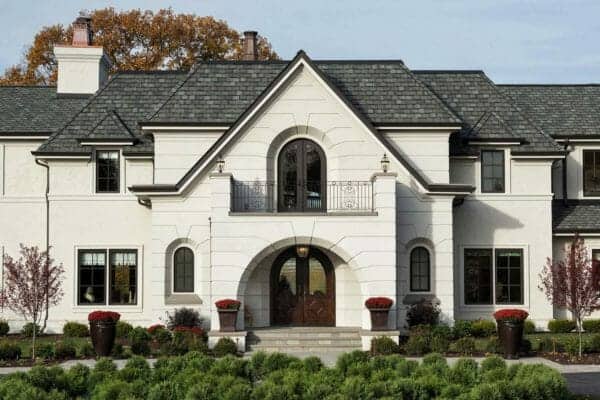
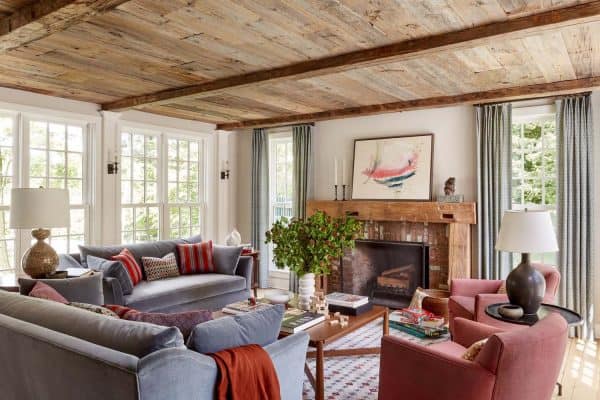


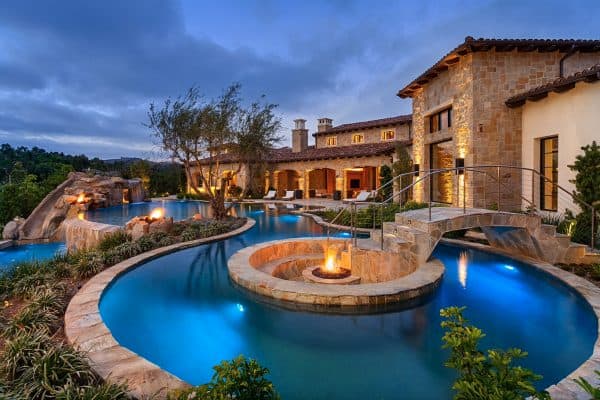

0 comments